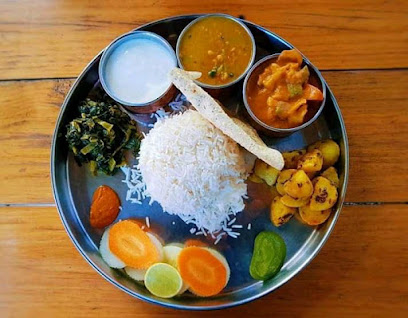
Explore the Majestic Sagarmatha National Park: Gateway to the Himalayas
Discover the breathtaking beauty of Sagarmatha National Park, home to Mount Everest, diverse wildlife, and rich Sherpa culture.
Sagarmatha National Park, home to the iconic Everest, is a UNESCO World Heritage site that offers breathtaking views, diverse wildlife, and unforgettable trekking experiences. The Jorsalle Entrance Gate serves as your starting point for adventures into this stunning landscape, rich with natural beauty and cultural significance.
A brief summary to Sagarmatha National Park Jorsalle Entrance Gate
- QPFC+FWM, Lukla - Everest Base Camp Trekking Route, Khumjung, Phakding, 56000, NP
- +977985-2835236
- Monday 12 am-12 am
- Tuesday 12 am-12 am
- Wednesday 12 am-12 am
- Thursday 12 am-12 am
- Friday 12 am-12 am
- Saturday 12 am-12 am
- Sunday 12 am-12 am
Local tips
- Start your trek early in the morning to avoid crowds and enjoy the peaceful atmosphere.
- Acclimatize properly to the altitude by taking breaks and staying hydrated.
- Carry cash for entry fees and local purchases, as many places do not accept cards.
- Respect local customs and traditions, especially when visiting monasteries.
- Dress in layers to adjust to the varying temperatures throughout the day.
Getting There
-
Car
If you are traveling by car from the nearest major city, you will want to head towards Lukla. The most common route is via the Araniko Highway, which leads you through the scenic landscapes of the Himalayas. The final stretch to Lukla is a steep and narrow road, so please drive carefully. Upon reaching Lukla, you will need to park your car in designated parking areas as cars are not allowed in the park. From Lukla, proceed to the Jorsalle Entrance Gate on foot.
-
Public Transportation (Bus)
You can take a local bus from Kathmandu to Jiri or directly to Lukla. Buses to Jiri leave from the main bus park in Kathmandu and take approximately 8-10 hours. From Jiri, you can catch a jeep or local bus to Lukla, which will take around 4 hours. Once in Lukla, follow the signs to the Jorsalle Entrance Gate, which is about a 3-hour trek away. The bus fare from Kathmandu to Jiri is approximately NPR 500-800, and the jeep fare from Jiri to Lukla is around NPR 1500-2000.
-
Trekking
After reaching Lukla, the most popular way to reach the Jorsalle Entrance Gate is by trekking. The trek to Jorsalle typically takes around 3 hours and follows the well-marked trail alongside the Dudh Koshi River. Make sure to bring enough water and snacks, and be prepared for some steep sections. The initial part of the trail is slightly uphill, and you will pass through several small villages along the way. Look out for signposts indicating the direction to Jorsalle.
Discover more about Sagarmatha National Park Jorsalle Entrance Gate
Iconic landmarks you can’t miss
Panorama Lodge and Restaurant
3.5 km
Discover the charm of the Himalayas at Panorama Lodge and Restaurant - your gateway to adventure and culinary delights in Namche Bazar.
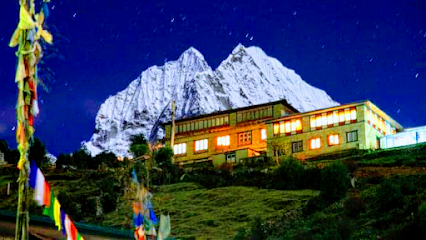
Kirant Momo Chowmin Restaurant
3.5 km
Experience authentic Nepali and Tibetan flavors at Kirant Momo Chowmin Restaurant in Namche Bazar, a must-visit for every traveler in the Everest region.
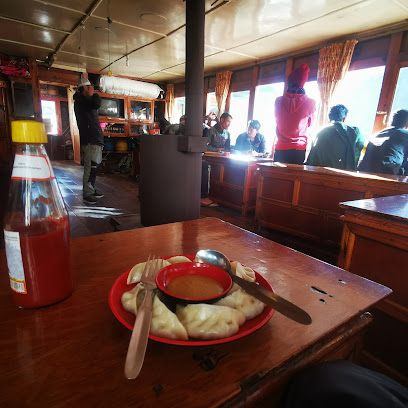
Hotel Kamal
3.5 km
Discover the charm and comfort of Hotel Kamal in Namche Bazar, your ideal base for exploring the majestic Himalayas.

TOMODACHI Restaurant
3.6 km
Experience the authentic flavors of Nepal at TOMODACHI Restaurant in Namche Bazar, where delicious cuisine meets breathtaking mountain views.
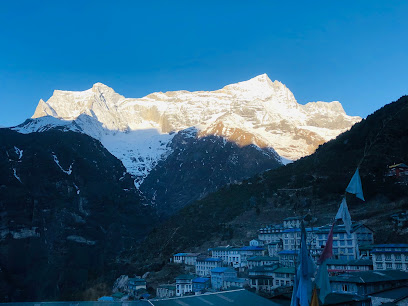
Mountain Lodges of Nepal - Namche
3.6 km
Experience the warmth and comfort of Mountain Lodges of Nepal in Namche, your perfect base for exploring the majestic Himalayas.
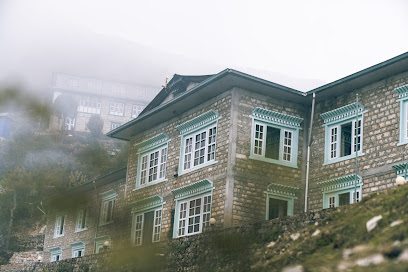
The Bodhi Hotel, Namche
3.6 km
Discover comfort and breathtaking views at The Bodhi Hotel in Namche, the gateway to Everest adventures.

Eat smart
3.6 km
Experience the taste of the Himalayas at Eat Smart, a culinary oasis for trekkers in Namche Bazar, offering hearty meals and warm hospitality.
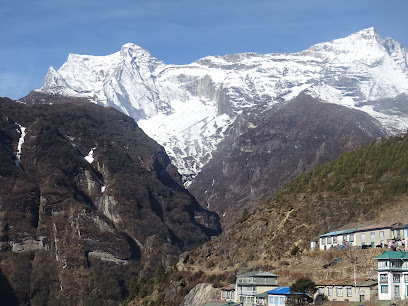
Green Tara Hotel
3.6 km
Discover the tranquil ambiance of Green Tara Hotel in Namche Bazar, your ideal lodge for exploring the Everest region's majestic landscapes.
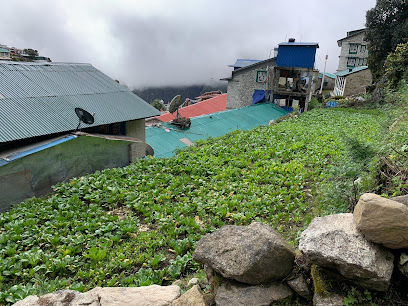
Everest Bakery
3.6 km
Savor the best baked goods in Namche Bazar at Everest Bakery, where every treat is a slice of mountain magic.
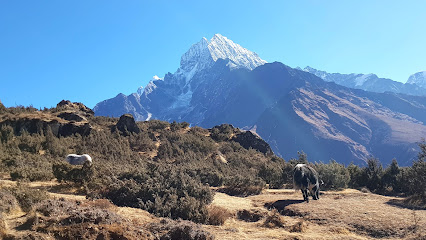
HighCamp Cafe
3.6 km
Discover HighCamp Cafe in Namche Bazar, a cozy eatery offering delicious pizza, coffee, and baked goods amidst breathtaking Himalayan views.
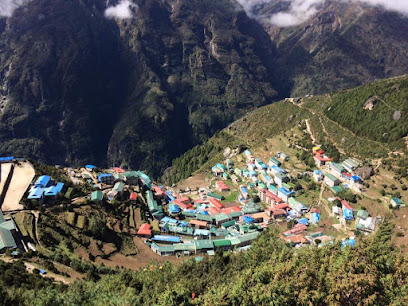
Hotel Sherpaland
3.6 km
Discover comfort and adventure at Hotel Sherpaland in Namche Bazar, the perfect base for your Everest trekking experience.
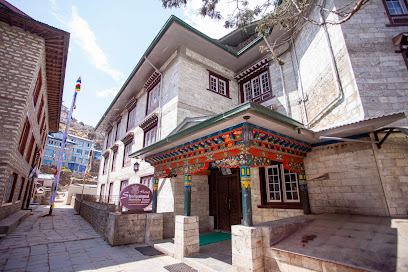
Toktok Rest Stop
3.6 km
Experience the warmth of hospitality and breathtaking views at Toktok Rest Stop, a vital pitstop on the Everest Base Camp trek.
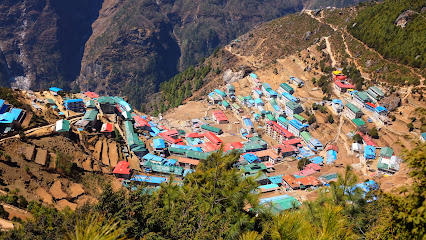
Khumbu Lodge
3.7 km
Discover the heart of the Himalayas at Khumbu Lodge, where comfort meets authentic local culture in Namche Bazar.
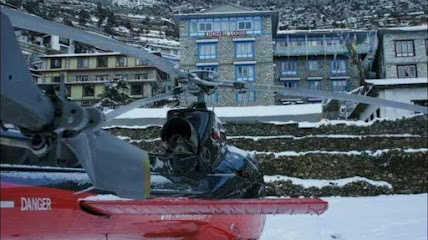
Hotel Camp de Base
3.7 km
Discover the tranquility of Hotel Camp de Base in Namche Bazar, a perfect lodge for trekkers seeking comfort and authentic local experiences.

Thawa Lodge ,Restaurent &Bakery Cafe
3.7 km
Explore the flavors of Namche Bazar at Thawa Lodge, where local cuisine meets warm hospitality in the heart of the Himalayas.
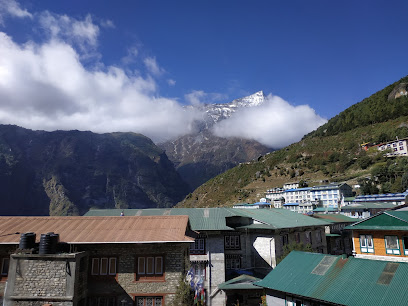
Unmissable attractions to see
Hillary Bridge
1.9 km
Experience breathtaking views and adventure at Hillary Bridge, a stunning suspension bridge on the Everest Base Camp trek in Khumjung, Nepal.
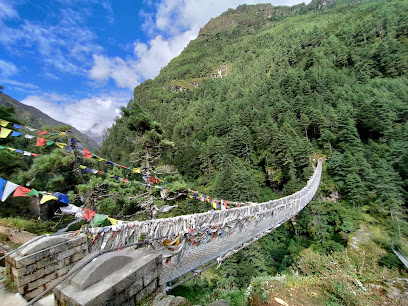
Toktok Waterfall
2.3 km
Experience the breathtaking beauty of Toktok Waterfall, a hidden gem along the Everest Base Camp trek, nestled in the heart of the Himalayas.
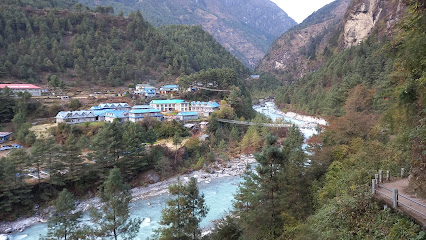
Everest View Point
2.3 km
Experience the awe-inspiring beauty of Mount Everest at the Everest View Point, a must-visit destination for every traveler.
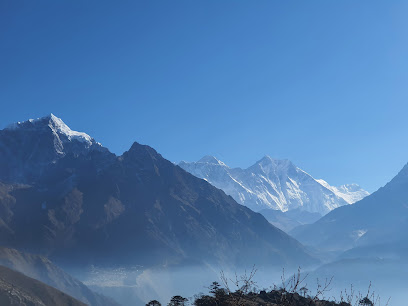
Everest Viewpoint
3.3 km
Experience the breathtaking beauty of Mount Everest at the stunning Everest Viewpoint, a must-visit for every traveler in the Himalayas.
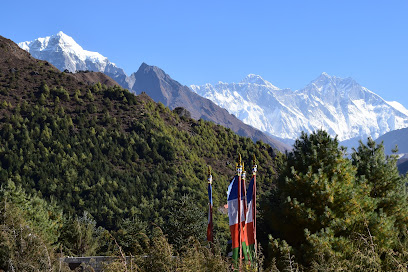
Sagarmatha National Park Museum
3.3 km
Explore the rich heritage and stunning landscapes of Sagarmatha National Park at the Sagarmatha National Park Museum in Namche Bazar.
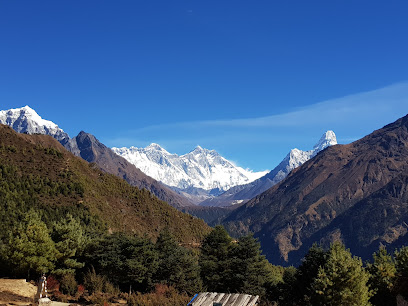
Namche Bazaar Stupa
3.5 km
Discover the serene beauty and spiritual significance of Namche Bazaar Stupa, a must-visit destination in the heart of the Himalayas.
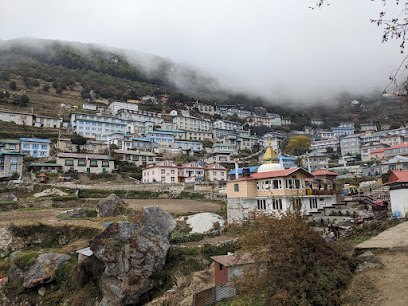
Water-powered Buddhist prayer wheels
3.5 km
Discover the serene beauty of water-powered Buddhist prayer wheels in Namche Bazar, a unique spiritual attraction amidst the majestic Himalayas.
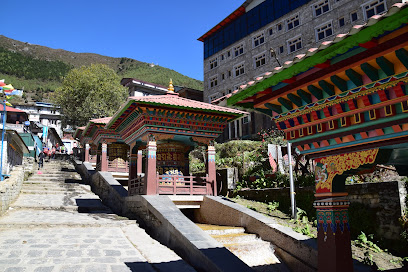
Mount Everest Documentation Center
3.6 km
Discover the history of Everest exploration at the Mount Everest Documentation Center in Namche Bazar, where adventure meets legacy.

Sherpa Culture Museum
3.6 km
Explore the essence of Sherpa life at the Sherpa Culture Museum, where heritage meets adventure in the heart of the Himalayas.
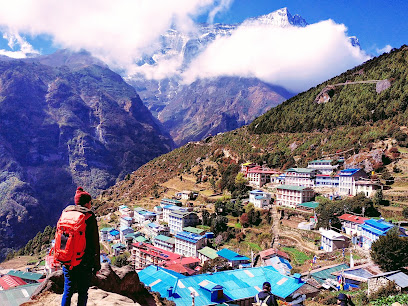
Irish Pub
3.6 km
Experience the perfect blend of adventure and relaxation at the Irish Pub in Lukla, your home away from home on the Everest Base Camp trekking route.
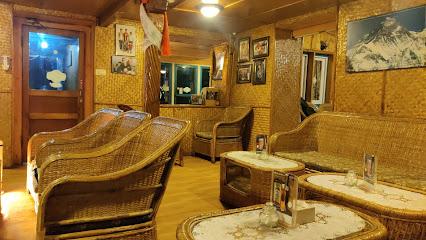
Namche Bazaar Lookout
3.6 km
Explore the breathtaking views and rich culture at Namche Bazaar Lookout, the gateway to the Everest region, perfect for adventure seekers and nature lovers.
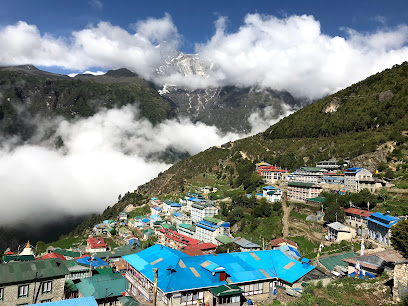
Namche Monastery
3.7 km
Explore the tranquility and spiritual richness of Namche Monastery in the heart of the Himalayas, a must-visit for travelers seeking peace and cultural insight.
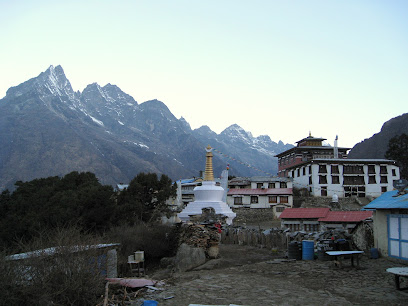
Namche bazar
3.8 km
Explore the vibrant culture and breathtaking landscapes of Namche Bazar, the gateway to Everest and a trekker's paradise.
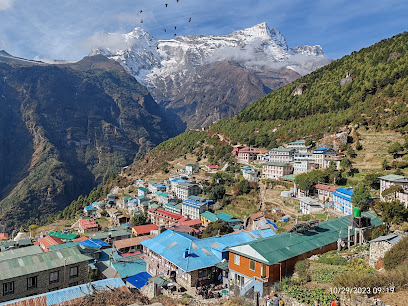
Everest Base Camp Namche Bazaar
3.9 km
Experience the adventure of a lifetime at Everest Base Camp, where breathtaking views and Sherpa culture meet in the heart of the Himalayas.
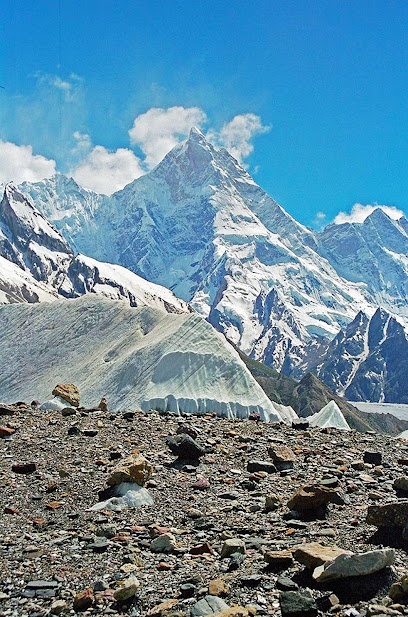
View point
4.0 km
Discover stunning views and cultural richness at Namche Bazar View Point in the heart of the majestic Himalayas.
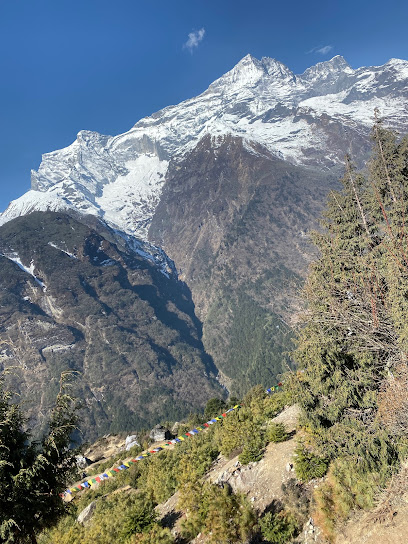
Essential places to dine
Friendship Lodge Restaurant & Bar
0.4 km
Experience delightful dining at Friendship Lodge Restaurant & Bar in Namche—where stunning views meet delicious cuisine amidst your Everest adventure.
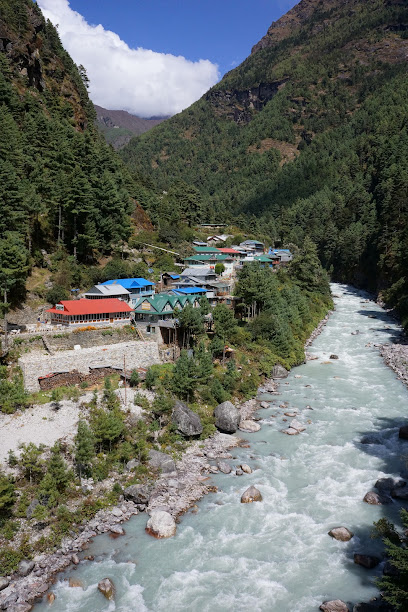
Chumoa Guest House & Restaurant
0.6 km
Experience comfort and authentic Nepali cuisine at Chumoa Guest House & Restaurant along your Everest Base Camp trek.
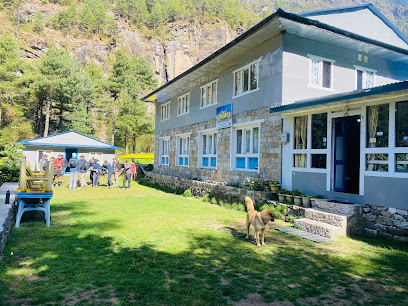
Gokarna coffee and tea shop
0.8 km
Discover Gokarna Coffee and Tea Shop on your Everest trek - a cozy haven serving delightful brews amidst stunning mountain vistas.
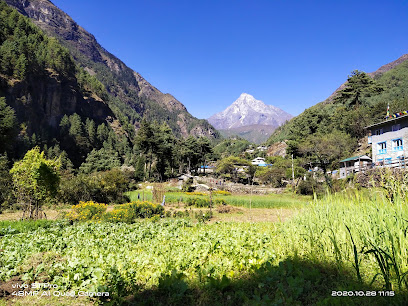
Waterfall View Restaurant
2.3 km
Experience delightful cuisine with breathtaking waterfall views at Waterfall View Restaurant in Lukla, Nepal.
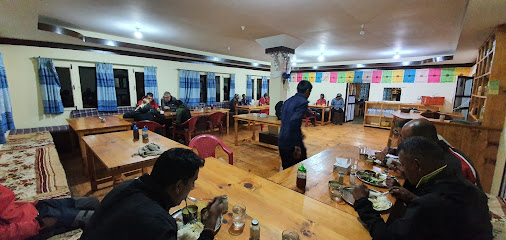
Magar Kitchen Home
2.4 km
Experience authentic Nepali flavors at Magar Kitchen Home in Tok Tok - where every meal tells a story.
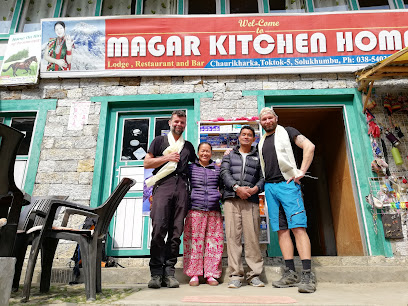
Solukhumbu Restaurant
3.4 km
Experience authentic Nepali cuisine amidst breathtaking mountain views at Solukhumbu Restaurant in Namche Bazaar.
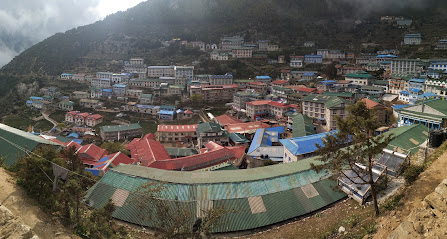
Tamang Restaurant
3.5 km
Experience authentic Nepalese flavors in Namche Bazar at Tamang Restaurant, perfect for trekkers seeking comfort and local cuisine.
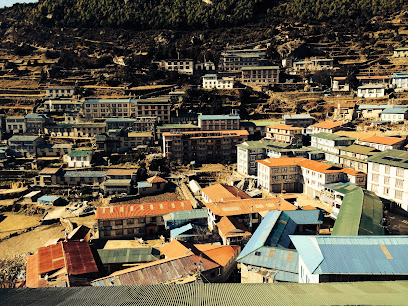
Namche Bazar Lunch Place & Restaurant
3.5 km
Discover delectable cuisine at Namche Bazar Lunch Place & Restaurant, where every meal is a taste of Himalayan adventure amidst stunning mountain views.
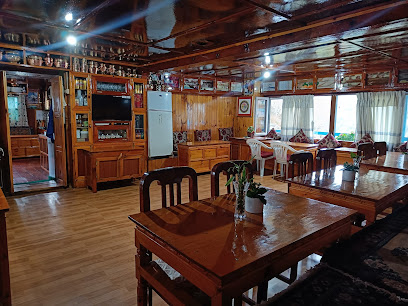
RAINBOW BAR
3.5 km
Discover Rainbow Bar in Namche Bazar - A vibrant restaurant and bar offering delicious food and stunning mountain views.
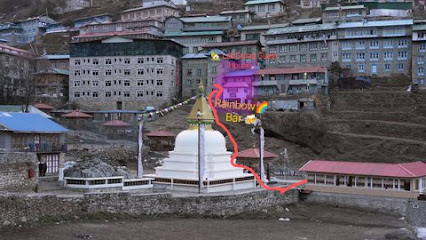
Hotel sherpa and restaurant
3.5 km
Discover delightful Nepalese cuisine at Hotel Sherpa and Restaurant in Namche Bazar—your cozy retreat before conquering Everest!
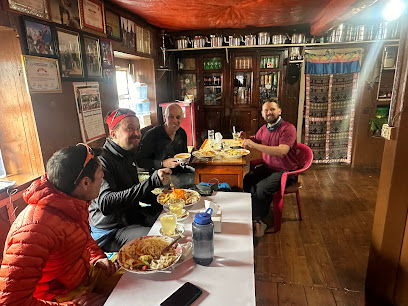
UMAMI TASTE CONER
3.5 km
Experience authentic Asian cuisine at UMAMI TASTE CONER in Namche Bazar - where every dish tells a story amidst breathtaking mountain views.

Namché Organics
3.6 km
Discover organic delights at Namché Organics, where fresh ingredients meet stunning Himalayan vistas in Namche Bazar.
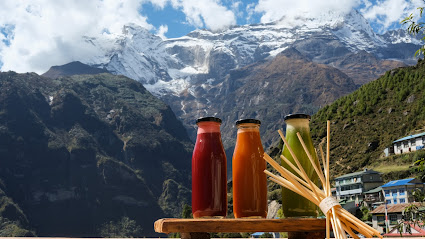
Kongde View Lodge and Restaurant
3.6 km
Experience authentic Nepali cuisine with breathtaking mountain views at Kongde View Lodge and Restaurant in Namche Bazar.

Himalayan Lodge Restaurant
3.6 km
Experience authentic Nepalese cuisine amidst stunning mountain views at Himalayan Lodge Restaurant in Namche Bazar.
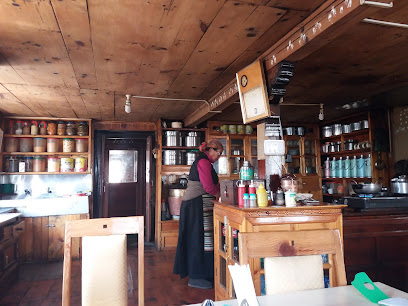
Buddha Lodge and Restaurant
3.6 km
Discover authentic Nepali flavors at Buddha Lodge and Restaurant in Namche Bazar, where every meal is accompanied by breathtaking Himalayan views.

Markets, malls and hidden boutiques
Shyam Electronic Store
3.5 km
Discover essential electronics at Shyam Electronic Store in Namche Bazar, your go-to spot for gadgets on the Everest trekking route.

Local Market
3.5 km
Experience the vibrant Local Market in Namche Bazar, a hub of Sherpa culture filled with handicrafts, fresh produce, and lively atmosphere.
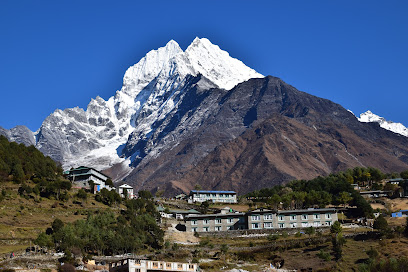
Stupa Cafe
3.5 km
Discover the serene ambiance of Stupa Cafe in Namche Bazar, where exceptional coffee meets breathtaking Himalayan views.
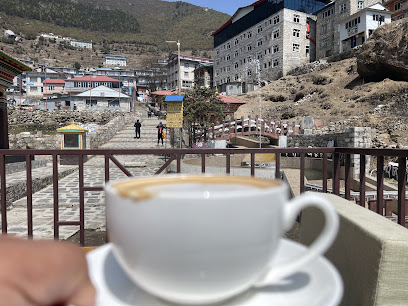
Everest Yak
3.5 km
Discover unique handcrafted souvenirs and local artwork at Everest Yak in Namche, the perfect stop for trekkers exploring the Everest region.

Namche Gear
3.5 km
Discover Namche Gear for all your trekking apparel and equipment needs in the heart of Namche Bazaar, Nepal's gateway to Everest.

EVEREST GEAR
3.5 km
Discover high-quality outdoor gear and apparel at Everest Gear in Namche Bazar, your essential stop for Himalayan adventures.

NEPAL EXPLORE(नेपाल एस्प्लोर )
3.5 km
Explore the vibrant fashion scene of Nepal at Nepal Explore, where local craftsmanship meets modern style in the heart of Namche Bazar.

Namche Wool House
3.5 km
Explore the authentic craftsmanship of Namche Wool House, a must-visit shopping destination in the heart of Namche Bazar, perfect for unique woolen souvenirs.
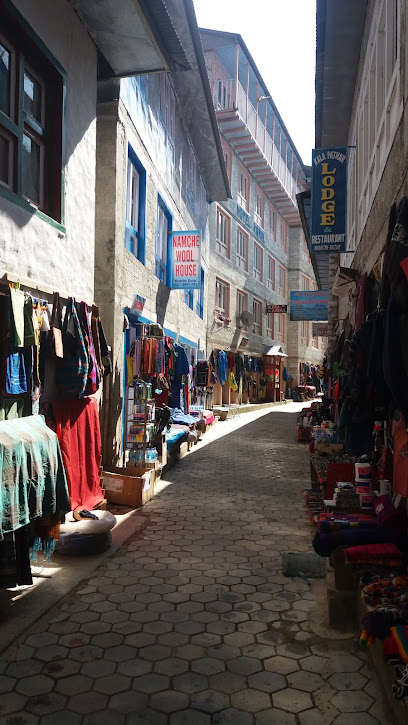
Everest Sherpa Equipment & Grocery
3.5 km
Discover essential gear and local flavors at Everest Sherpa Equipment & Grocery in Namche Bazar, the perfect stop for your Himalayan adventure.

Art Heritage of Himalayan
3.6 km
Discover the vibrant artistic heritage of the Himalayas at the Art Heritage of the Himalayas in Namche Bazar, where tradition meets creativity.
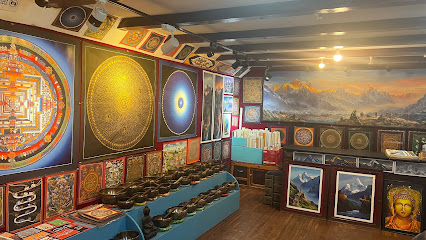
Namche electronic center and grocery shop
3.6 km
Discover the essential hub for electronics and groceries in Namche Bazar, ensuring you stay connected and prepared during your Everest adventure.

La Sportiva & Salomon Shoes, Black Diamond clothing Store
3.6 km
Discover top-notch outdoor gear at La Sportiva & Salomon Shoes Store in Namche Bazar, your gateway to Himalayan adventures.
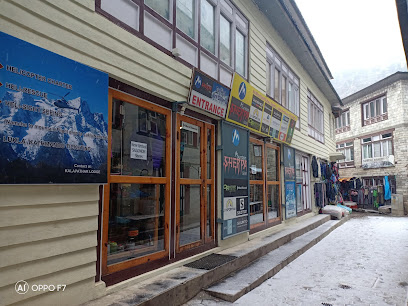
Okhaldhunga Kirana Pasal
3.6 km
Discover the essence of local life at Okhaldhunga Kirana Pasal, your go-to grocery store in the heart of Namche Bazar, rich with local flavors.
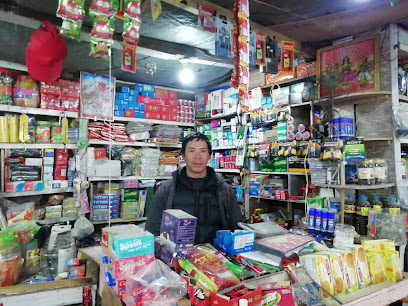
Namche Electronic Center Or Grocery Shopping
3.6 km
Discover a unique shopping experience at Namche Electronic Center, where electronic goods meet local charm in the heart of the Himalayas.
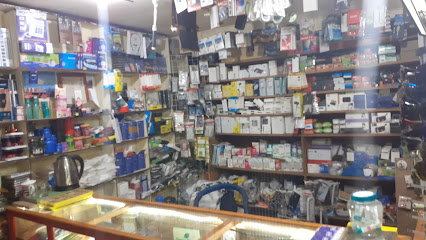
The North face
3.6 km
Explore The North Face in Namche Bazar for top-quality outdoor gear and expert advice for your Himalayan trekking adventure.
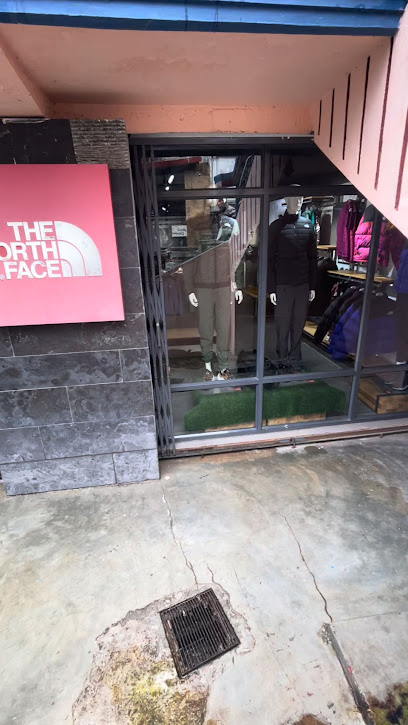
Essential bars & hidden hideouts
Lali guras guest house
3.5 km
Experience the charm of Lali Guras Guest House in Namche Bazar, where local culture meets breathtaking mountain views, perfect for trekkers and travelers alike.

Cafe Danphe Bar
3.6 km
Discover the charm of Cafe Danphe Bar in Namche Bazar, where trekkers unite for delightful drinks and breathtaking mountain views.

Yeti Bar
3.7 km
Experience the vibrant atmosphere of Yeti Bar in Namche Bazar, where adventure meets relaxation in the heart of the Himalayas.

Reggae Bar
3.8 km
Discover the lively atmosphere of Reggae Bar in Benkar - a perfect blend of local culture, music, and refreshing drinks.
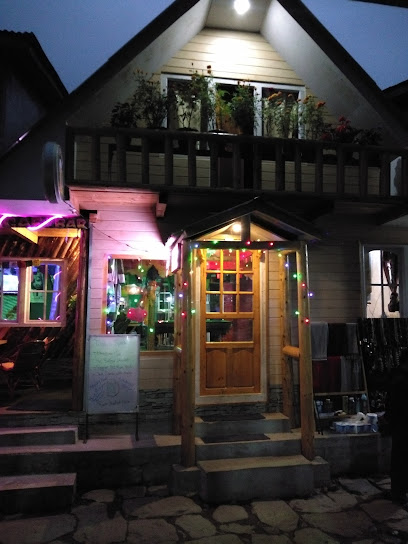
THE IRISH BAR And Phakding View Point Cafe
3.8 km
Experience the warmth of The Irish Bar & Phakding View Point Cafe, where local flavors meet breathtaking Himalayan views in the heart of the Everest trek.
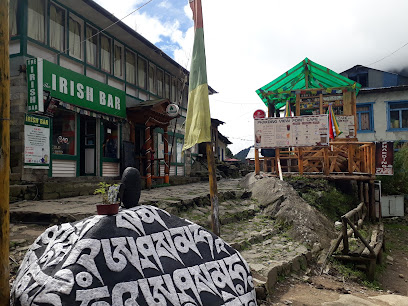
Darjeeling Exotic Lodge Restaurant and Bar
4.1 km
Discover the Darjeeling Exotic Lodge Restaurant and Bar, offering delightful cuisine and stunning views along the Everest Base Camp trek.
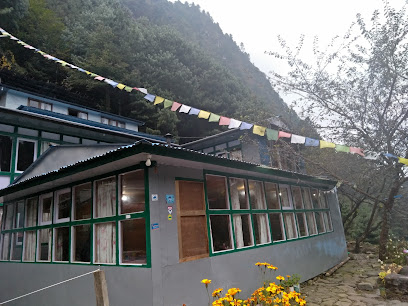
Everest Summiter Lunch Place
6.8 km
Experience authentic Nepali cuisine at Everest Summiter Lunch Place, where every meal is accompanied by breathtaking views of the Himalayas.
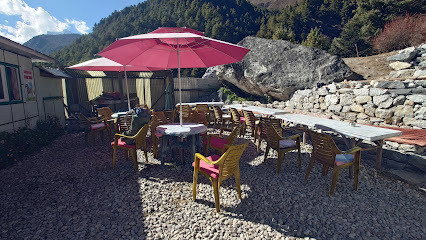
Restaurant bridgev
6.9 km
Experience authentic Nepali cuisine at Restaurant Bridgev, where breathtaking Himalayan views and warm hospitality meet.
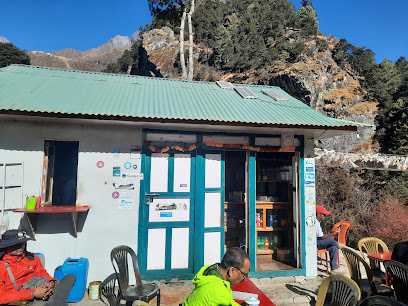
Dole View Point Lodge & Restaurant
7.4 km
Experience breathtaking views and authentic Nepalese cuisine at Dole View Point Lodge & Restaurant, a gem along the Gokyo Ri Trekking Trail.
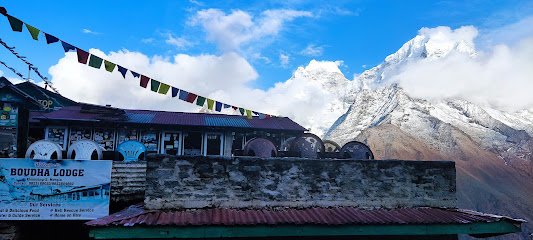
The Local Cheer's & Beer's Pub
9.2 km
Experience the warmth of The Local Cheer's & Beer's Pub in Lukla, the perfect spot for trekkers to unwind with local brews and hearty meals.
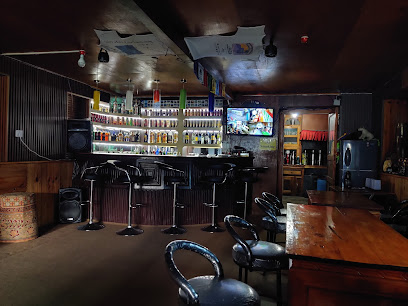
Center Point Snooker and Bar
9.3 km
Discover the perfect blend of relaxation and adventure at Center Point Snooker and Bar, the ideal retreat for trekkers in Chaurikharka.

The Waves Pub
9.4 km
Experience the vibrant atmosphere of The Waves Pub, a must-visit stop on your Everest trek, offering local brews and stunning mountain views.
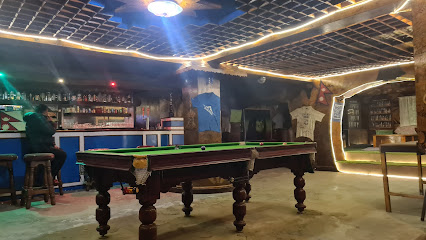
The Irish Pub
9.4 km
Experience the warmth of The Irish Pub along the Everest Base Camp trek, where hearty meals and local drinks await weary adventurers.
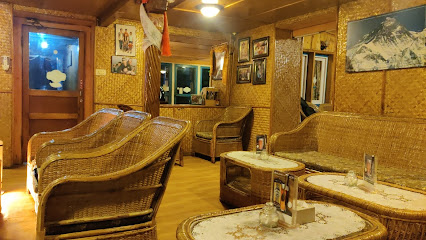
Scottish Pub
9.4 km
Experience the spirit of adventure and camaraderie at the Scottish Pub, a beloved retreat for trekkers on the Everest Base Camp route.
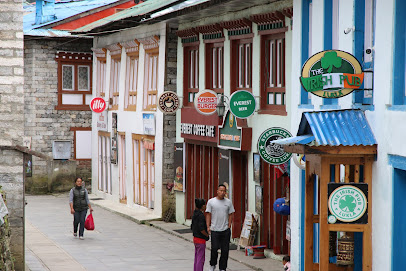
Juneli lodged
13.3 km
Experience the warmth of Nepalese hospitality at Juneli Lodge, the perfect dining retreat along the breathtaking Everest Base Camp Trek.
